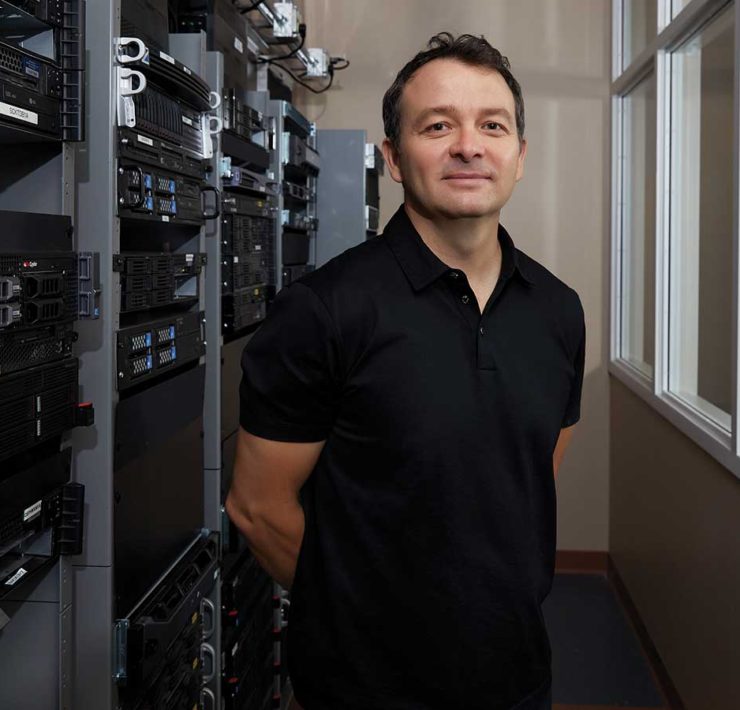Welcome to Columbia, Fiber!
Thousands of hair-thin strands of glass reflect light like a mirror, carrying data to your home, your office or your classroom at speeds you’ve never experienced before. What used to take five minutes to load now takes 10 seconds. The multicolored, never-ending spinning wheel becomes a thing of the past, and suddenly you don’t have to kick your kids off the Internet to get work done at home. It’s fiber, and it’s causing quite the stir in Columbia.
“At one gigabyte-per-second speeds, the fiber broadband networks can go between 10 and 100 times faster than what most people have in their homes,” says Greg Baker, a market development manager for CenturyLink. Traditionally, data has been transmitted through copper cables; however, copper is limiting in the amount of speed a network can get as well as the distance the data can travel.
In March 2010, the City of Columbia unsuccessfully applied to be one of the trial communities for Google’s GigU program, which would provide Google Fiber to select locations across the nation. Although Columbia’s efforts were denied, it became increasingly obvious that the interest in and need for faster, more reliable network speeds was present in the community.
For more than 20 years, Columbia Water and Light has used fiber for its own needs, passing information about controlling the water and electrical systems. However, it has excess dark fiber, or fiber that is not connected to the Internet. Water and Light leases the dark strands to education institutions, government entities, health care facilities and Internet service providers, who are then responsible for “lighting” the fiber, or connecting it. Currently, Columbia Water and Light leases excess dark fiber that isn’t being used to approximately 30 entities, including Columbia Public Schools, Boone Hospital, Socket Telecom and Bluebird Network.
On Aug. 5, 2014, the City released the Columbia Broadband Planning Study, which looked at the potential economic incentives for the city to light the fiber and then sell it to various providers.
“At no point are we considering being an Internet service provider; we would just be using an asset that we already have to make sure it was being fully utilized,” says Connie Kacprowicz, communications and marketing supervisor for the Columbia Water and Light Department. Lighting the fiber would allow the city to gain additional revenue, provide another service and permit Internet service providers to buy the fiber from the city and offer it to residents at competitive prices without having to invest in laying fiber-optic cables themselves.
The study, issued by Denver-based consulting firm Magellan Advisors LLC, stated that 72 percent of businesses in Columbia had reported some sort of disruption to their business due to Internet speed and reliability problems and that 87 percent of businesses listed their current Internet services as insufficient for their business needs.
“This report went on to the City Council, and then the council agreed that we should go ahead and work on a potential business plan,” Kacprowicz says. Currently, the city is in the process of writing a request for proposals from contractors, who would provide a business plan for how the lit fiber would best be utilized.
Driving economic development
The same day the Magellan Report was released, CenturyLink named Columbia as one of 16 cities that would be receiving 1gb speeds or higher through its own fiber broadband network. The fiber rollout, which Baker says will be complete by spring, will bring high-speed Internet access to residential homes and small businesses at a more affordable cost.
“If you’re a very large business corporation with hundreds of users in your building, we can, and always have been able to, provide much higher speeds to those folks,” Baker says. “However, the cost of that service was usually out of reach for the small-business owner and absolutely out of reach for the homeowner.”
While providers such as CenturyLink fight to attract customers with speed, Midwest Computech CEO David Nivens says 1gb speeds are still out of reach for many small businesses.
“All you have to do is look at Kansas City to see how adding affordable (and that is the key word for most every small business and startup) super high-speed Internet has changed the landscape of that business community,” Nivens says. “Kansas City is now viewed as a destination for startups that are reliant on cheap fiber Internet connections.”
Nivens says 1gb speeds are available for $100 per month for residential customers and $500 per month for businesses. In Columbia, fiber with a service-level agreement starts at $750 per month for businesses through CenturyLink.
“If we could get those kinds of speeds and pricing here, that would have a significant impact on our ability to attract, create, retain and grow business,” Nivens says.
The potential economic impact of Columbia residents, and especially small businesses, having access to fiber networks is immense. In Columbia, the Magellan report found that 98 percent of establishments in the city are small businesses.
“People won’t go somewhere specifically because of the fact that they have fiber, but they probably won’t go somewhere without it,” says Bill Turpin, president of the Missouri Innovation Center.
“The biggest benefit of fiber in Columbia is that we’ll stop losing tech companies and entrepreneurs to places like Silicon valley,” he adds.
As Columbia celebrates its quality of life, Baker sees Internet speed as an essential component to that quality. “Being able to offer these speeds will bring in the tech-savvy people, the entrepreneurs,” Baker says. “I think that’s what a lot of economic developers want to bring in to the community.”
The fiber hype is quickly spreading to the rest of mid-Missouri. In 2012, Socket installed the first residential fiber Internet service in Callaway County. This installation was part of a $23.7 million grant from the American Recovery and Reinvestment act of 2009 to deploy fiber in the county, where residents had been restricted to dial-up or satellite Internet. Jefferson City was also one of the 16 cities chosen by CenturyLink to launch fiber.
“What we would like to see is the cities of Columbia and Jefferson City taking advantage of having these high speeds and use them as an economic development tool to attract the people who need it,” Baker says. In the months to come, it has yet to be decided who will build Columbia’s high-speed infrastructure and just how far the economic reach of fiber will spread across the city.




